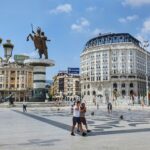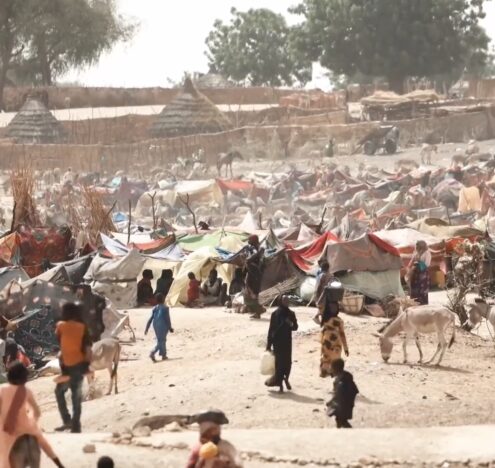Most can’t start their day without a cup of coffee. Millions around the globe need that first steaming cup o’joe to even begin opening their computers and scrolling through the plethora of new and always urgent emails. But as people sip their Arabica with almond milk, the coffee industry teeters on the brink of collapse as it struggles with the ever-growing risk of climate change. Can the coffee industry survive as global temperatures rise?
Long before humans commoditized coffee and developed farming systems to grow coffee isolated under conditions of full sun (i.e., monocultures), the coffee plant thrived in canopied tropical rainforests around the world. Now, after generations of cultivating coffee as a crop, irresponsible farming practices such as poor water management and dependency on harmful fertilizers and pesticides — which prioritize production and profit over sustainability — have left the coffee industry vulnerable to climate change. As temperatures rise, the likelihood of droughts increases exponentially, leading also to an uptick in diseases that kill the pollinating insects necessary for coffee to grow. But the impact is not irreversible and a process called regenerative agroforestry may be the key to preserving the industry upon which so many rely.
Regenerative agroforestry is a process in which native trees and shrubs are purposefully integrated into farming systems in order to increase soil nutrients, encourage biodiversity and act as natural pesticides and herbicides for other flora within the system. In its wild state, coffee plants thrive in forested or shaded environments, and the reintroduction of tall trees and plants mimics this natural habitat while maintaining optimal plantation design for high-yield coffee farming. Studies show that coffee plants grown in dense shade can thrive for centuries. And it’s not only that the tree cover provided by regenerative agroforestry results in ideal growing conditions. The reintroduction of native plants causes indigenous bird and insect species to return to the environment, helping eliminate threats such as pests and weeds that might otherwise be treated with chemicals that can pollute the surrounding environment.
After generations of cultivating coffee as a crop, irresponsible farming practices such as poor water management and dependency on harmful fertilizers and pesticides — which prioritize production and profit over sustainability — have left the coffee industry vulnerable to climate change.
Regenerative agroforestry also helps combat global warming because of its carbon stock potential. The introduction of new plants into the environment enables the soil to act as a carbon sink by capturing greenhouse gasses from the air and storing them deep within the earth. The benefits are cyclical. By removing greenhouse gases from the atmosphere and sequestering them in soil, the soil becomes more nutrient-rich, enabling healthy plant growth and the continued trapping of excess greenhouse gasses. In this way, the symbiosis between coffee trees, native plants and carbon arising from regenerative agroforestry practices contributes to a diverse, flourishing ecosystem.
In addition to its agricultural and environmental benefits, regenerative agroforestry practices can play a significant role in the economic stability of a country. Research indicates that of the approximately 12.5 million smallholder coffee farms across the globe, most are located in developing countries with up to 44% of farmers living at or below the poverty line. Take Colombia, for example. Colombia is one of the world’s top coffee-growing countries, accounting for US$2.64 billion per year, or around 16% of the country’s GDP. The majority of Colombian coffee farms are modest in size and family owned. Climate change impacts these farmers at alarming rates and threatens their livelihoods as new weather patterns, ever-changing season lengths and severe weather events become commonplace. Indeed, the higher the temperature rises, the less hospitable the planet becomes to coffee. It is often not economically feasible for small farmers to buy new plots of land at higher altitudes to offset increased ground temperatures and adjust to the shifting environment. A global warming of average temperatures would and already does decimate these communities of small farmers, leaving them without jobs or income. With nearly 70% of the world’s coffee supply coming from the small farmers most vulnerable to these abrupt changes, introducing regenerative agroforestry could prolong the viability of the soil and add secondary commodities to help ease the financial burden. While the monoculture system is economically efficient in the short term, the addition of commodities, such as banana trees, introduces another stream of revenue while ensuring the longevity of the main coffee crop.
The world has seen a growing concern regarding the lasting damage of greenhouse gas emissions from agriculture and this is most apparent with the creation of the Agriculture Innovation Mission (AIM) for Climate. In partnership with the United Arab Emirates, the United States is hoping to “catalyze greater investment in agricultural R&D and innovation to help raise global ambition and underpin more rapid and transformative action in all countries.” Additionally, Japan pledged to cut emissions by 46-50% of its 2013 levels by the year 2030. Canada is strengthening its commitment to the Paris Climate agreement with an aim to reduce its emissions by 40-45% of its 2005 levels by 2030. Regenerative agroforestry can help these countries meet and even surpass these goals. The discussion of sustainable agriculture, especially with the United States seated firmly at the table, is a massive step forward for international food and climate policy. Officially debuting at the 2021 United Nations Climate Change Conference in Glasgow later this year, AIM will provide much-needed detail as to how they will reform existing agricultural practices.
As climate change intensifies, the coffee industry will irreversibly change. Introducing regenerative agroforestry whenever possible will combat the environmental and economic impacts climate change has already taken on the industry. We, as consumers, possess the power to demand that larger companies and producers enforce stricter requirements for environmental certifications. We can refuse to buy the coffee that is sold by companies with apathetic environmental and societal impact policies. We can enact real change by understanding our purchasing power. Regenerative agroforestry prioritizes the farmers that depend upon the consumer, the consumer that depends upon the commodity and the commodity that depends upon a stable climate and planet. The coffee industry can survive, but it needs our help.
Leah Garden is the 2021 Environment Fellow at Young Professionals in Foreign Policy Project and Development Lead of the Sustainable Agriculture Economy with Bambino Life Foundation. She has previously served as the Dairy Greenhouse Gas Impact Intern at World Wildlife Fund, the Sustainability Communications Intern at the Can Manufacturers Institute, and Account Coordinator at the consulting firm Schultz & Williams. She holds an M.S. in Sustainability Management from American University’s Kogod School of Business and a B.S.B.A. from Bucknell University.





















